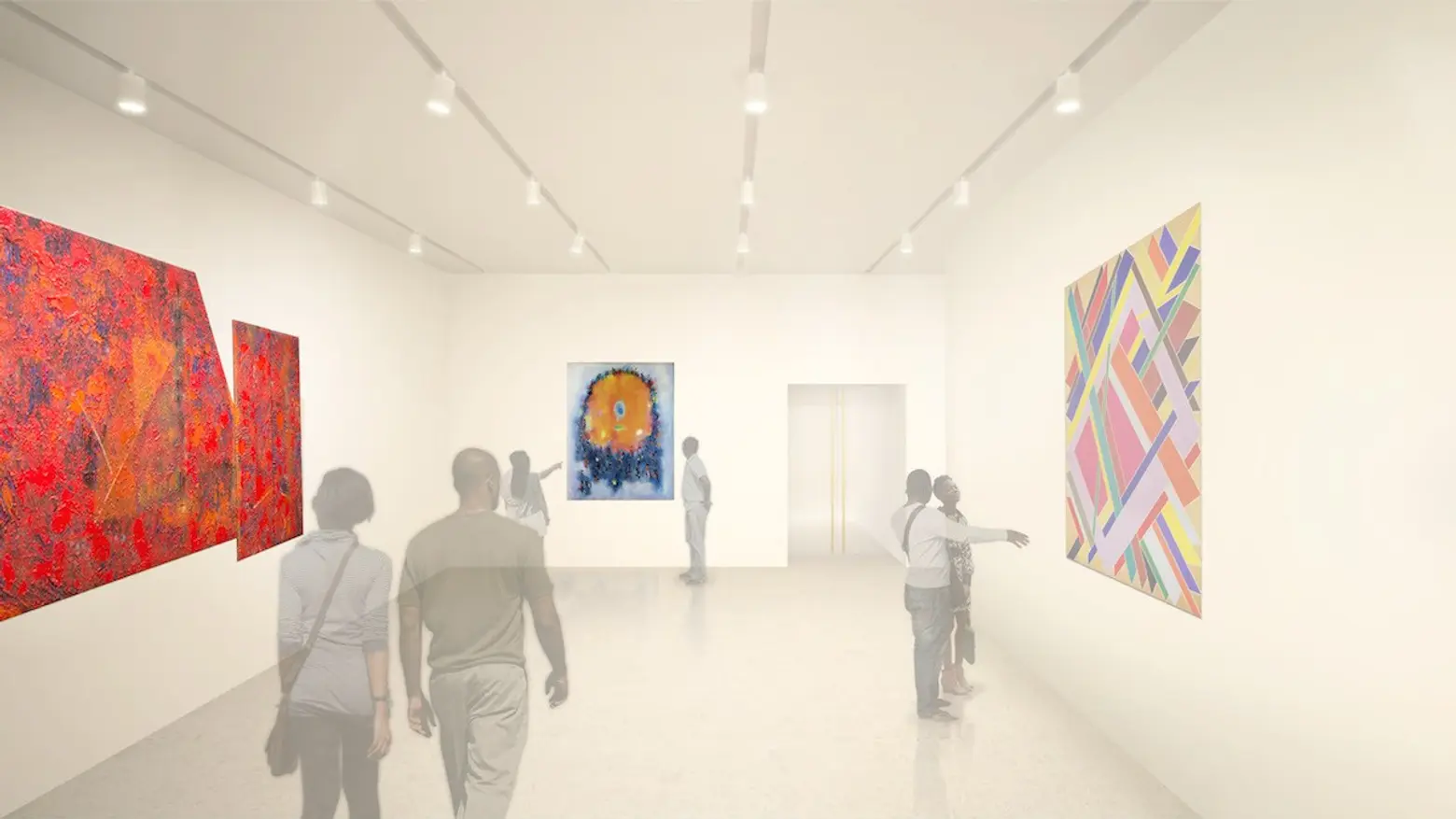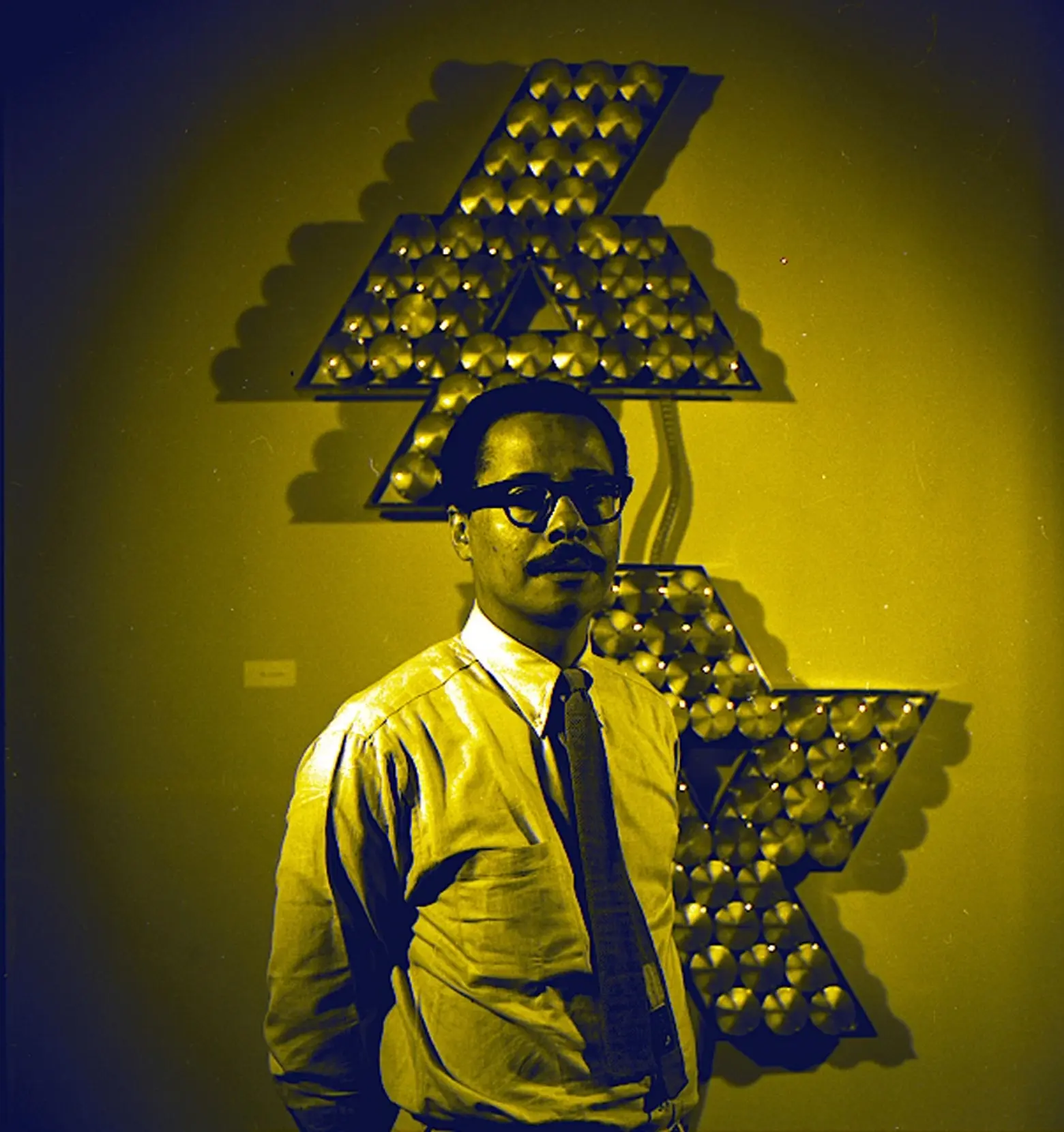

Photo: © Albert Vecerka/Esto
The Studio Museum in Harlem‘s new home will officially open next fall, the institution announced Tuesday. Designed by Sir David Adjaye, the building features stacked volumes over five stories and measures 82,000 square feet, increasing exhibition and public space by over 50 percent. Closed since 2018, the 125th Street museum will reopen with a presentation of the work of Tom Lloyd, an artist, educator, and activist featured in the Studio Museum’s inaugural 1968 exhibition, held in a rented loft on Fifth Avenue.


Located on the site of the museum’s home since 1979—the Kenwood Building, the new space will feature a theater, a studio for artists in residence, an education center, a rooftop terrace, and a cafe.
Studio Zewde, a Harlem-based landscape design firm, designed the rooftop terrace, which will also host programming and might have a food cart.
The museum’s offices are across the street in the National Urban League’s new headquarters, to be home to the city’s first museum dedicated to the civil rights movement.

The exhibition on Lloyd, who passed away in 1996, will feature roughly 20 works, including electronic installations, wall-mounted sculptures made from repurposed metal parts, and works on paper from the 1970s and 80s.
Additionally, the exhibit will include archival materials documenting Lloyd’s activism with the Art Workers’ Coalition and the Store Front Museum in Queens, which was the borough’s first art museum that Lloyd founded and directed for 15 years, according to a press release.
“Through the life and career of Tom Lloyd, whose solo exhibition inaugurated our Museum in 1968, we re-encounter an artist who was years ahead of his time in both his ideals and artistic practice. Now, thanks to other artists, scholars, and our Curator, Connie H. Choi, his work is coming to light,” Thelma Golden, director and chief curator of the Studio Museum, said.
“This exhibition is joined by a breadth of remarkable works from our collection which will be presented in our other incredible galleries. Taken in its entirety, our collection traces, as few institutions can, a history of creativity by artists of African descent that we will continue to nurture far into the future.”


Alongside the exhibition, a catalog designed by Miko McGinty includes essays by Choi, Reinhard Bek, Krista Thompson, Studio Museum Senior Curatorial Assistant Habiba Hopson, and artists Paul Stephen Benjamin, Nikita Gale, and Glenn Ligon.
When it opened in 1968, the museum’s first solo exhibition was “Electronic Refractions II,” showcasing Lloyd’s vibrant, abstract sculptures that utilize electronically programmed flashing lights.
Another installation will highlight pieces from the museum’s permanent collection, going as far back as the 1800s, as well as works by today’s most renowned artists. This exhibit will showcase over two centuries of creative achievements across mediums, and underscore the Studio Museum’s commitment to uplifting artists of African descent.
Artworks by Houston E. Conwill, David Hammons, and Glenn Ligon will return to the building’s public spaces.

A new collection catalog, designed by WeShouldDoItAll and published by Phaidon, will explore works by over 250 artists featured in the museum’s permanent collection and will include texts by more than 100 contributors.
This catalog will highlight the significant impact of the Studio Museum’s collection on art history and the cultural landscape. With approximately 9,000 pieces, the collection features works by acclaimed artists such as Romare Bearden, Dawoud Bey, Jordan Casteel, Barkley L. Hendricks, Seydou Keïta, Norman Lewis, Lorraine O’Grady, Faith Ringgold, and many others.

The museum has raised its capital fundraising target from $250 million to $300 million to ensure long-term sustainability. The campaign will support construction, endowment funds, as well as operating and capital reserves. Over $285 million has already been raised, according to the Times.
The new building was revealed in September 2017. The 2018 groundbreaking coincided with the cultural institution’s 50th anniversary year. In 2015, the museum revealed it would be working with Adjaye Associates in collaboration with Cooper Robertson on the new building.
RELATED:
Source link





